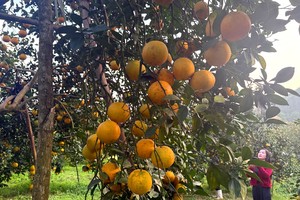Japan has always been a market with strict standards in importing agricultural products. Meanwhile, more and more Vietnamese people are living and working in Japan, and Japanese consumers' tastes are also changing. Vietnamese food is gradually becoming more popular with great potential to gain a foothold in the market.
However, entering this choosy market is a process requiring efforts from many sides. Currently, Vietnam is allowed to export three kinds of fresh fruits to this market, namely dragon fruit, Cat Chu mango and lychee.
The Department of Plant Protection under the Ministry of Agriculture and Rural Development is conducting negotiations to open more doors for Vietnamese longan to penetrate this market.
Nguyen Thi Thu Huong, deputy director of the department, said that Japan has the most stringent sanitary and phytosanitary standards in the world. Therefore, good preservation technology is required to maintain the freshness of fruits, including longan, during transportation at a reasonable cost. With such technology, Vietnamese longan will be able to compete and gain a foothold in the Japanese market.
In 2020, the Department of Plant Protection proposed applying the cold-pressure processing method for all varieties of longan and was accepted by the Japanese Ministry of Agriculture, Forestry and Fisheries (MAFF). The Japanese and Vietnamese sides spent many months developing a plan to carry out experiments applying this method.
If the cold-pressure processing technology is approved by the Japanese side, Vietnam will have a great opportunity to export this kind of fruit to this market.
Last year, Vietnam exported over 117,500 tons of longan, including over 11,000 tons of fresh longan. Vietnam fresh longan is currently sold in 17 countries and territories across the world.
























